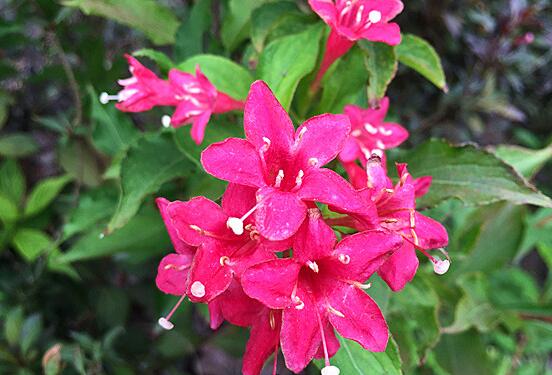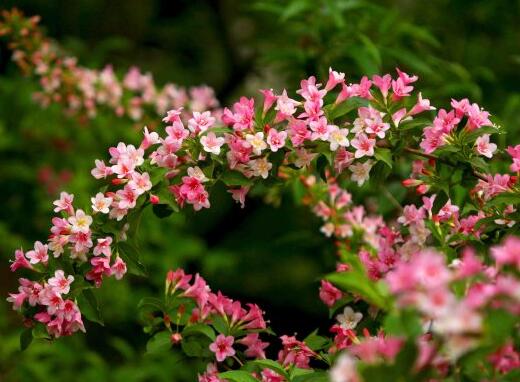Analysis of four Propagation methods for the Propagation of Blossom
The flower is adaptable, tillers flourishing and easy to cultivate. Sandy loam with good drainage is selected as a nursery ground, 1-2 year old seedlings or cuttings can be planted on ridges to cultivate large seedlings, the plant spacing is 50- 60cm, the stubble is 10- 15cm away from the ground after planting, and the seedlings can be used for landscaping when the height of the seedlings is more than 100cm after planting for 3 years. How does the flower reproduce?

How to reproduce flowers:
1. Sowing and breeding
The fruits are harvested in September and October of each year, dried, crushed, and removed to obtain seeds. Before sowing, germination should be carried out. The seeds should be soaked in cold water for 2-3 hours and wrapped in damp cloth for germination.
Sowing should be done in windless weather. Bed surface sowing or drilling can be used. The soil cover should not be too thick after sowing. The bed surface should be kept moist within 30 days. The seedlings can emerge in about 20 days.
During the growth period of seedlings of brocade flowers, weeds and insects should be frequently pulled out. The growth period of brocade flower is longer by sowing method, which is generally used for mass reproduction.
2. Cutting propagation
Cuttage method is a common method of propagation.
The flowers are usually selected for shoot cutting in June to July in summer. Select thick branches, cut into about 15cm long inserted lily, only keep the upper 2~3 leaves can be. Prepare a sand bed, or a seedbed of peat wood. After insertion, curtain shading, pay attention to heat preservation and moisture, generally more than 20 days after insertion can take root. Hardwood cuttings can also be carried out in March in spring, and the survival rate is also very high. Cuttings can bloom in 2 to 3 years.# p#subtitle #e#
3, layering propagation
The layering method is also a simple and easy method of propagation.
The branches of brocade flower present creeping shape, select healthy branches of brocade flower, remove outer skin, press them into soil in growing season, wait for them to take root. After rooting, the branches and roots are separated from the mother plant in the spring of the second year and replanted.
4. Plant division propagation
The ramet propagation of brocade flower can be carried out in early spring and autumn and winter. This is usually done in conjunction with transplanting when the plants regrow in spring.
The whole plant is dug out, several plants are taken as a cluster, divided into several clusters, and planted separately.
How do you reproduce flowers?
Have you ever seen brocade flowers? Broccoli is a common flowering shrub in the north. Broccoli is adaptable and has low requirements for soil, so it is easy to plant. Let's take a look at the breeding methods of brocade flowers.
1. Propagation of Weidaia Flower--Cutting
In summer, you can cut off part of the branches of brocade flowers, insert half of the branches into the soil, and then irrigate with water, and keep the soil moist. Meiyu season, you can cut a part of the shoots, this time the survival rate of cuttings is higher. In spring, you can use the method of hardwood cuttings, cut about 15cm of brocade flowers into the prepared seedbed, or use annual branches to cut in the open field, which is easier to survive.
2. Propagation of Weidania oleifera_layering
Layering can be done at any time, usually by pressing down the branches under the flowers, the branches are close to the soil, easy to become creeping, and the branches are easy to take root.
3. Reproduction of Weidaia flowers-ramets
The good season of ramets is mainly in autumn and winter and early spring. The whole plant of brocade flower can be dug out and planted by ramets. In the spring, can be used to grow mature branches open field cuttings, or summer with brocade flowers shoots, in the shade, or under the shade cuttings. To remember oh, brocade flower transplanting, spring and autumn to bring soil, summer to bring soil ball, so easier to survive.
4. Propagation of brocade flowers-sowing
Sowing, then, in early April, after sowing to often water, keep the soil moist, can not spray water with a watering can, will spray the seeds out of the ground, there is no way to grow seedlings. The seedlings emerge about 15 days after sowing. Brocade flowers grow slowly and generally do not use seeding methods.
Four propagation methods of brocade flower. cuttage
To plant a variety of flowering cordaria, we usually use cuttings. In summer, 1-2 years old branches without sprouting are cut into branches with a length of about 13cm as cuttings, then the cuttings are dipped in a-naphthylacetic acid solution of 2000mg/kg, and the cuttings are buried in about half of the soil, and then watering is carried out, and then the soil can be kept moist.
If you plant brocade flowers in the rainy season, use tender branches, and the branches should also be cut to a length of about 16cm. Attention should be paid to disinfection before cuttage, and at the same time pay attention to the drainage of potted plants to avoid pot water leading to plant death.
II. sowing
The first is seed collection, generally in September to October to harvest seeds, harvest, will dry the capsule crushed, winnowing after impurity can be obtained pure seeds. The second step is seed treatment, which is commonly known as germination. Soak seeds in cold water for 2-3 hours 1 week before sowing, then remove them and put them in the room for germination. If they are wrapped in damp cloth, the effect is better. It should be noted that sowing should be carried out in calm weather and no recent rainstorm, and the bed surface should be smooth and fine. The last thing to remember is seedling management. When seedlings grow three to four fibrous roots, they can be thinned for the first time. Remember to loosen the soil and weed in time.
III. bead
The layering usually selects the strong branches at the lower part of the flower body and removes its outer skin, because the lower branches are easy to creep, and the nodes are easier to root and survive.
IV. Ramet
The ramets are usually transplanted around spring. As the name suggests, rationing is to dig out the whole plant, divide it into several clusters, and cultivate each cluster separately.
After reading the four breeding methods of brocade flowers above, are you confident that you can grow beautiful brocade flowers now? Then try it!
- Prev

What should be paid attention to in the culture method of Brocade flower?
Brocade flowers like light, shade tolerance, cold resistance; lax requirements on the soil, can withstand barren soil, but to deep, moist and humus-rich soil growth is the best, afraid of waterlogging. Strong sprouting ability and rapid growth. Today, what the editor brings to you is the breeding methods and points for attention of brocade flowers. Let's take a look at the details.
- Next

The efficacy and function of Brocade Flower maintenance and Management of the four Seasons
It is suitable for planting in the corner of the courtyard wall and by the lake; it can also be used as a fence and cluster planting on the edge of the forest; embellished in rockery and sloping land. Brocade is a good pollution-resistant tree species with strong resistance to hydrogen chloride. The flower branches can be put in a bottle. Today, the editor brings you the efficacy and function of brocade flowers. Let's take a look at the details.
Related
- Fuxing push coffee new agricultural production and marketing class: lack of small-scale processing plants
- Jujube rice field leisure farm deep ploughing Yilan for five years to create a space for organic food and play
- Nongyu Farm-A trial of organic papaya for brave women with advanced technology
- Four points for attention in the prevention and control of diseases and insect pests of edible fungi
- How to add nutrient solution to Edible Fungi
- Is there any good way to control edible fungus mites?
- Open Inoculation Technology of Edible Fungi
- Is there any clever way to use fertilizer for edible fungus in winter?
- What agents are used to kill the pathogens of edible fungi in the mushroom shed?
- Rapid drying of Edible Fungi

